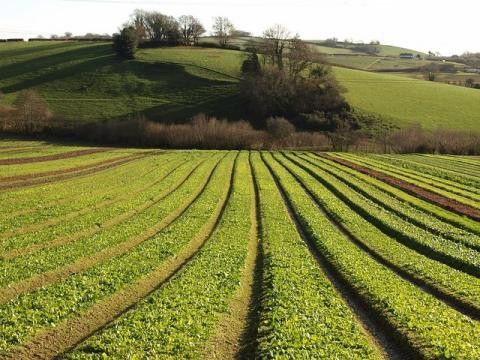A Guide to Precision Agriculture in Indonesia : Harnessing Data for Better Yields
Precision Agriculture sector in Indonesia faces a multitude of challenges. From a growing population to unpredictable weather patterns and resource scarcity, farmers are under increasing pressure to maximize yields while minimizing environmental impact. This is where precision agriculture (PA) steps in, offering a data-driven approach to optimize farming practices and unlock a new era of agricultural efficiency.
Introduction to Precision Agriculture
Precision agriculture, also known as site-specific farming or smart farming, utilizes technology to collect real-time data about various aspects of a farm. This data, encompassing soil health, moisture levels, nutrient content, and crop growth, empowers farmers to make informed decisions about resource allocation. Unlike traditional methods that treat an entire field uniformly, PA allows for targeted interventions based on the specific needs of different areas within a field.
The Pillars of Precision Agriculture
Several key technologies form the backbone of precision agriculture:
- Sensors: These are deployed across the farm to gather data on various parameters like soil moisture, temperature, and nutrient levels. Different types of sensors cater to specific needs, such as drones with multispectral imaging capabilities to assess crop health.
- Geographic Information Systems (GIS): This technology integrates spatial data from sensors with other farm information like field boundaries and historical crop yields. GIS allows for the creation of detailed maps that visually represent variations within the field.
- Variable Rate Technology (VRT): Advanced machinery equipped with VRT can adjust the application of fertilizers, pesticides, and water based on real-time data collected from sensors. This ensures that resources are used efficiently, minimizing waste and environmental impact.
- Data Analytics: The vast amount of data collected by sensors requires sophisticated software for analysis. Data analytics tools help farmers identify trends, develop predictive models, and make informed decisions about crop management practices.
Benefits of Precision Agriculture for Indonesian Farmers
Indonesian agriculture stands to gain significantly from the adoption of precision agriculture. Here are some key benefits:
- Increased Crop Yields: By precisely addressing the needs of each area within a field, PA can significantly improve crop yields. Targeted application of resources reduces waste and ensures that crops receive the optimal amount of water, nutrients, and pest control.
- Improved Resource Management: PA empowers farmers to optimize the use of fertilizers, pesticides, and water. This not only reduces costs but also minimizes environmental impact by preventing excessive use of resources.
- Enhanced Farm Sustainability: Precision agriculture promotes sustainable practices by reducing reliance on chemical inputs and water usage. This helps to preserve the environment and ensures long-term agricultural productivity.
- Reduced Risk and Improved Decision Making: Data-driven insights from PA tools enable farmers to anticipate problems such as pest outbreaks or irrigation needs. This allows for proactive measures to be taken, minimizing risk and improving overall farm management.
Challenges and Considerations for Implementing Precision Agriculture
Despite its advantages, implementing precision agriculture in Indonesia faces certain challenges:
- Cost: The initial investment in sensors, data management platforms, and advanced machinery can be significant for smallholder farmers. Government initiatives and subsidies can play a crucial role in making PA technologies more accessible.
- Technical Expertise: Implementing and using PA tools requires a certain level of technical knowledge. Training programs and extension services are necessary to equip farmers with the skills needed to effectively utilize these technologies.
- Connectivity: Effective data collection and analysis rely on robust internet connectivity. Government and private initiatives should work towards expanding internet access in rural areas to bridge the digital divide.
The Future of Precision Agriculture
The future of Indonesian agriculture holds immense potential with the integration of precision agriculture. As technology becomes more affordable and user-friendly, PA is poised to empower Indonesian farmers to become more efficient, sustainable, and resilient. Government support, industry collaboration, and farmer training programs will be instrumental in ensuring a smooth transition towards a data-driven agricultural future.
Conclusion Precision Agriculture
Precision agriculture offers a transformative approach to farming in Indonesia. By leveraging cutting-edge technology to collect and analyze data, farmers can optimize resource utilization, minimize environmental impact, and ultimately achieve greater agricultural productivity. As the challenges of cost, technical expertise, and connectivity are addressed, PA has the potential to revolutionize the Indonesian agricultural landscape, leading to a future of food security and sustainability.




